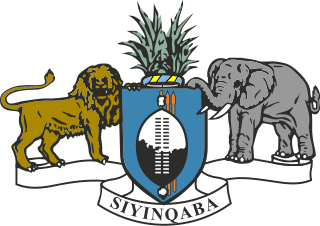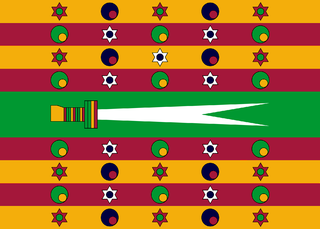 W
WThe Asantehene is the absolute monarch of the Asante people and the historical Kingdom of Asante. The Asante royal house traces its line to the Oyoko Abohyen Dynasty of Nana Twum and the Bretuo Dynasty of Osei Tutu Opemsoo, who formed the Empire of Asante in 1701 and was crowned Asantehene. Osei Tutu held the Asante throne until his death in battle in 1717, and was the sixth king in Asante royal history.
 W
WThis page contains two versions of the list of kings of Burundi, the traditional version before 1680 and the modern genealogy. The Kingdom of Burundi was ruled by sovereigns, titled mwami, whose regnal names followed a cycle: Ntare, Mwezi, Mutaga, and Mwambutsa. Traditionally, it was thought that there had been four complete cycles but the modern genealogy indicates that there were only two complete cycles, starting with Ntare III Rushatsi.
 W
WThe King of Dahomey was the ruler of Dahomey, an African kingdom in the southern part of present-day Benin, which lasted from 1600 until 1900 when the French Third Republic abolished the political authority of the Kingdom. The rulers served a prominent position in Fon ancestor worship leading the Annual Customs and this important position caused the French to bring back the exiled king of Dahomey for ceremonial purposes in 1910. Since 2000, there have been rival claimants as king and there has so far been no political solution. The Palace and seat of government were in the town of Abomey. Early historiography of the King of Dahomey presented them as absolute rulers who formally owned all property and people of the kingdom. However, recent histories have emphasized that there was significant political contestation limiting the power of the king and that there was a female ruler of Dahomey, Hangbe, who was largely written out of early histories.
 W
WThis article lists the monarchs (Ngwenyamas) of Eswatini.
 W
WThis article lists the Emperors of Ethiopia, from the founding of the Zagwe dynasty in the 9th/10th century until 1974, when the last Emperor from the Solomonic dynasty was deposed.
 W
WThis is a list of the rulers of the Kingdom of Kongo known commonly as the Manikongos. Mwene in Kikongo meant a person holding authority, particularly judicial authority, derived from the root -wene which meant, by the sixteenth century at least, territory over which jurisdiction was held. The ruler of Kongo was the most powerful mwene in the region who the Portuguese regarded as the king upon their arrival in 1483.
 W
WThis article list the monarchs of Lesotho.
 W
WThe Mandara Kingdom was an African kingdom in the Mandara Mountains of what is today Cameroon. The Mandara people are descended from the kingdom's inhabitants.
 W
WThe following is an incomplete list of the rulers of the Kingdom of Matamba, a late medieval West−Central African state centered in a region of present day Angola.
 W
WThe following is an incomplete List of Ngolas of the Kingdom of Ndongo, a pre-colonial West−Central African state in what is now Angola.
 W
WNumidia was an ancient Berber kingdom located in the region of North Africa in what is now northern Algeria and parts of Tunisia and Libya. The Kingdom existed from the 3rd to 1st centuries BC. The Kingdom of Numidia was established as a client kingdom by Rome following the Second Punic War. It was annexed by Rome in 46 BC and, after a brief period of restored independence, again in 25 BC.
 W
WThis page contains a list of kings of Rwanda. The Kingdom of Rwanda was one of the oldest and the most centralized kingdoms in the history of Central and East Africa.
 W
WThe beys of Tunis were the monarchs of Tunisia from 1705, when the Husainid dynasty acceded to the throne, until 1957, when monarchy was abolished.
 W
WThe sultans of Zanzibar were the rulers of the Sultanate of Zanzibar, which was created on 19 October 1856 after the death of Said bin Sultan, who had ruled Oman and Zanzibar as the sultan of Oman since 1804. The sultans of Zanzibar were of a cadet branch of the Al Said Dynasty of Oman.
 W
WThis article lists the Zulu kings, including Zulu chieftains and kings from their earliest known history up to the present time.